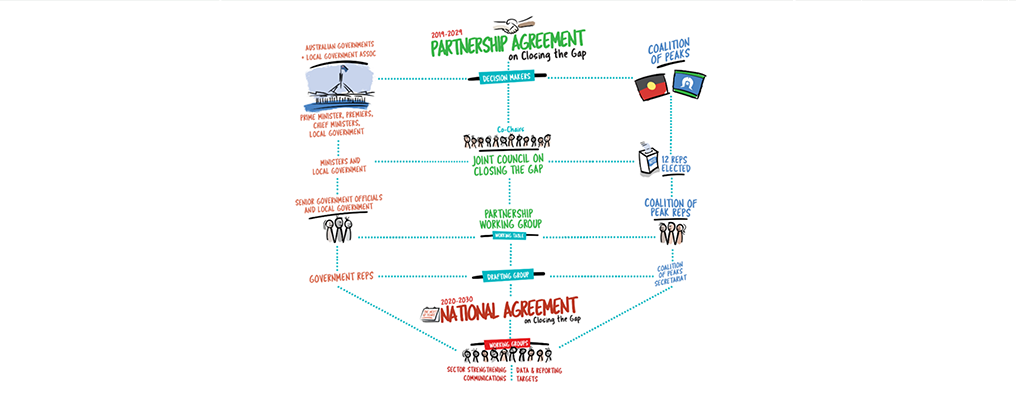Closing the Gap Refresh: Incorporating First Nations Voices in Policy Design
30 November 2022
● Research
In 2008, the Council of Australian Governments reached an agreement to work with Indigenous communities on ‘Closing the Gap’ in Indigenous disadvantage. Over the years, however, it became clear that the agreement was not working, and that Aboriginal and Torres Strait Islander Peoples needed to play a greater role in the design and delivery of services. In 2018, Australian governments and the Coalition of Aboriginal and Torres Strait Islander Peak Organisations agreed to ‘refresh’ the agreement and, in 2019, the Partnership Agreement on Closing the Gap, 2019-2029 was formally signed.
This case study explores how Indigenous communities and Australian governments reframed Closing the Gap to improve upon its predecessor by drawing on the voices of Aboriginal and Torres Strait Islander peoples involved in negotiations over the refresh. Nevertheless, while the development of the targets may have improved, in practice, progress to Close the Gap remains stalled.
It demonstrates that When Aboriginal and Torres Strait Islander people are included and have a say in the design and delivery of services that impact on them, better outcomes are achieved, and that Aboriginal and Torres Strait Islander people need to be at the centre of the Closing the Gap policy because the gap will not close without their full involvement. Australian governments at all levels, cannot expect Aboriginal and Torres Strait Islander people to take charge of their own lives or to work constructively with Australian governments if they are excluded from decision-making processes that affect Aboriginal and Torres Strait Islander peoples’ rights and affairs. Consultation with Indigenous communities and representatives takes time. Governments cannot rush such a process, but incorporating Indigenous peoples’ voices in policy design is a precondition to improving outcomes, but it will not by itself lead to that result.
Please note this case has a Teaching Note associated with it. To access a copy, please email caselibrary@anzsog.edu.au with a request and citing the title.
- Authors: Harry Hobbs and Dani Larkin
- Published Date: 30 November 2022
- Author Institution: University of Technology Sydney and University of New South Wales
- Content Length: 20
